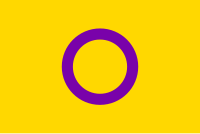Intersex medical interventions

Intersex is when a person's body parts and/or chromosomes do not fit into typical male or female categories. Sometimes when a baby is born, doctors may decide to do a medical intervention to help make their body parts look more like typical male or female parts. This is called intersex medical intervention.
There are a few different kinds of intersex medical interventions. One kind is called surgery. This means that doctors cut into the baby's body and change some of their body parts. For example, if a baby has a penis and a vagina, doctors may decide to do surgery to make the baby's genitalia look like a typical male or female. Surgery can also involve removing certain body parts that don't fit with typical male or female.
Another kind of intersex medical intervention is called hormone treatment. This is when doctors give the baby hormones (chemicals in the body that help it grow and change) to help make their body look more like typical male or female. For example, doctors may give a baby with a penis and a vagina hormones to help make their body grow more like a typical male.
It is important to remember that not all intersex babies need medical intervention. Some intersex people are happy with their bodies the way they are, and medical intervention is not necessary. Additionally, some people think that intersex medical intervention can be harmful and traumatic. It is important to talk to intersex people and listen to their experiences so that we can better understand this topic.
There are a few different kinds of intersex medical interventions. One kind is called surgery. This means that doctors cut into the baby's body and change some of their body parts. For example, if a baby has a penis and a vagina, doctors may decide to do surgery to make the baby's genitalia look like a typical male or female. Surgery can also involve removing certain body parts that don't fit with typical male or female.
Another kind of intersex medical intervention is called hormone treatment. This is when doctors give the baby hormones (chemicals in the body that help it grow and change) to help make their body look more like typical male or female. For example, doctors may give a baby with a penis and a vagina hormones to help make their body grow more like a typical male.
It is important to remember that not all intersex babies need medical intervention. Some intersex people are happy with their bodies the way they are, and medical intervention is not necessary. Additionally, some people think that intersex medical intervention can be harmful and traumatic. It is important to talk to intersex people and listen to their experiences so that we can better understand this topic.
Related topics others have asked about:
